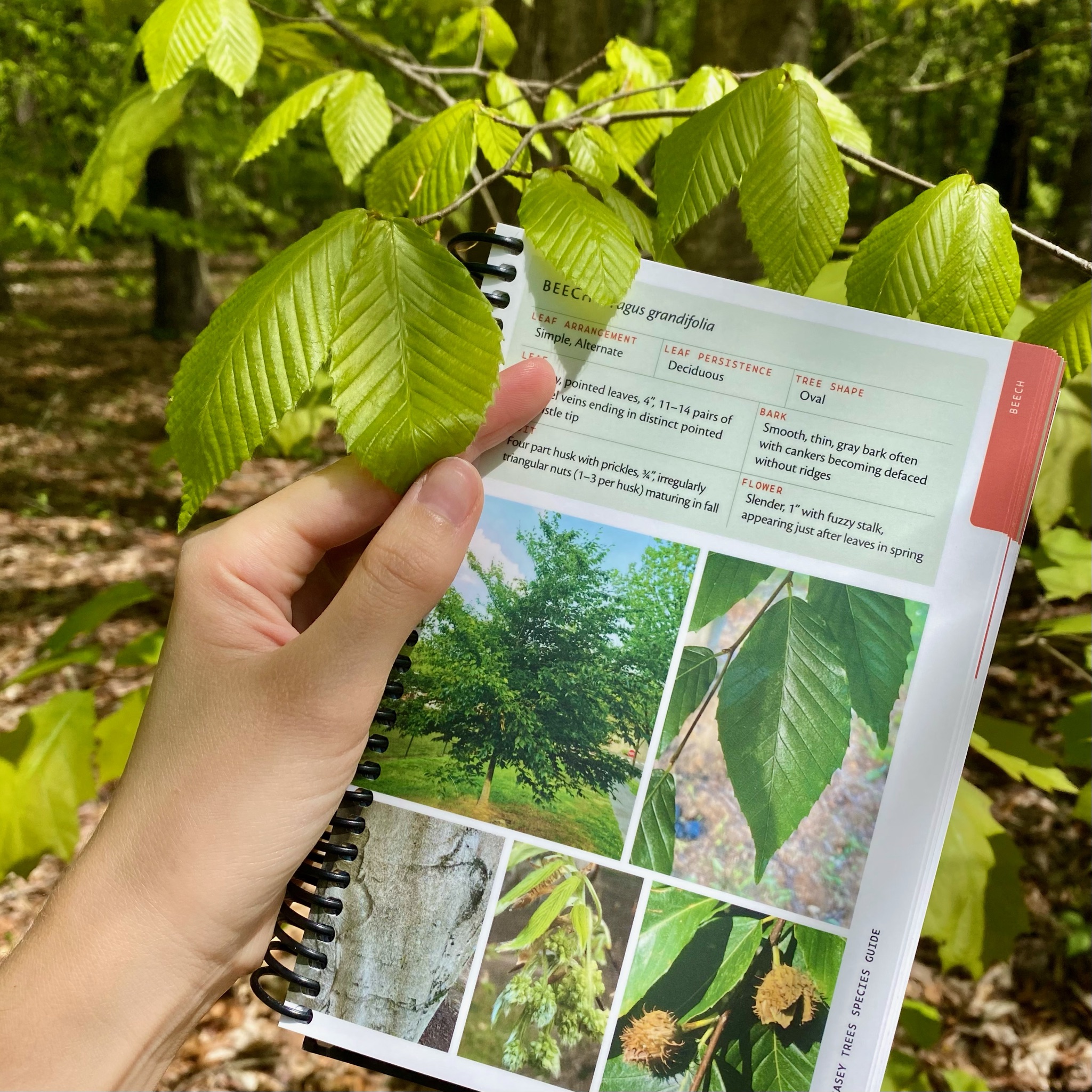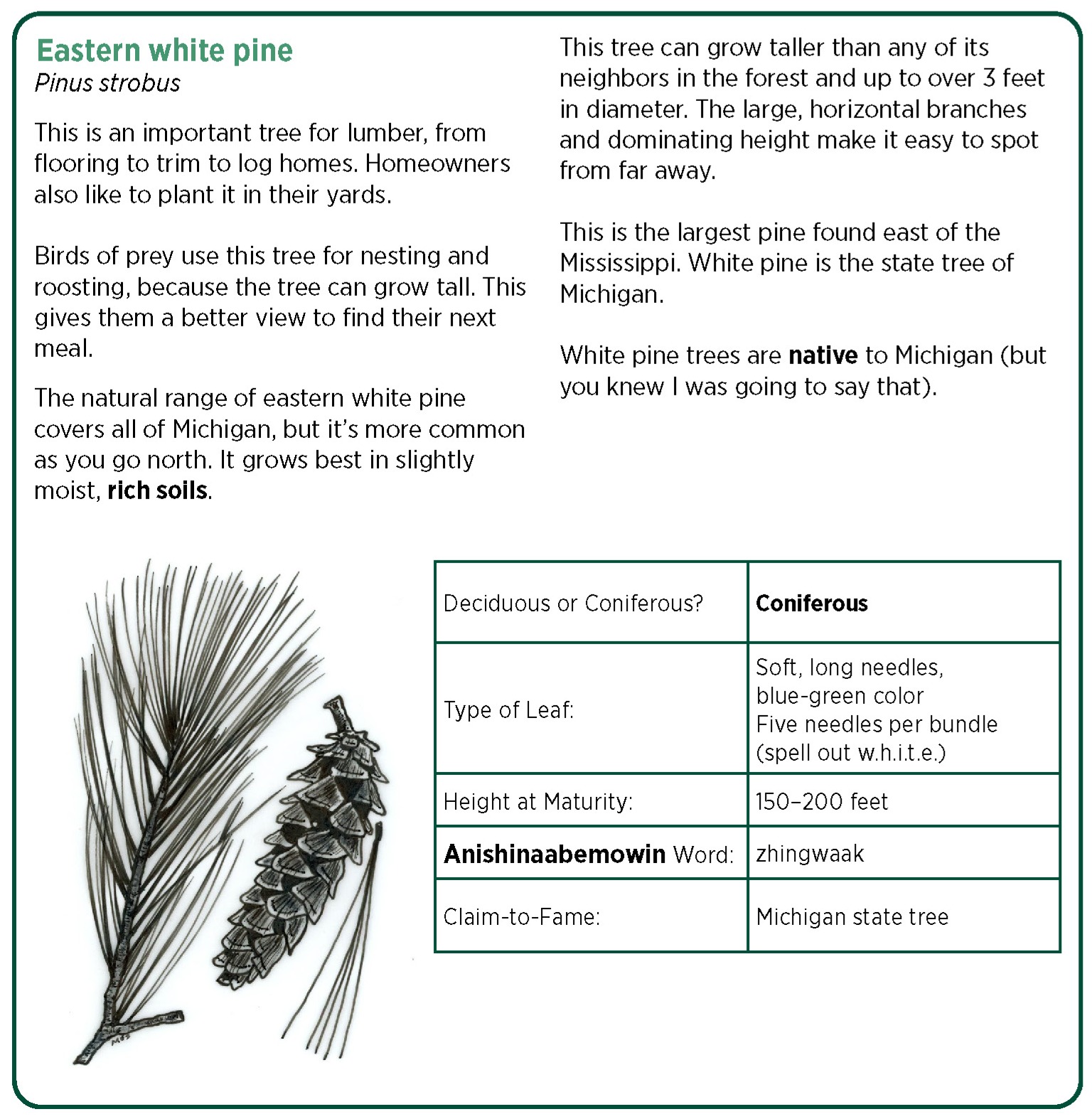Feature Article
Tree Identification and Uncommon Species

Our forests are one of our most precious assets. Today, there are more than 16 million acres of forest land in Wisconsin, and 19 million acres in Michigan. 46 and 53 percent of these State’s land areas are covered in some kind of forest. Since the mid-1960s, the extent of forest land has been expanding, and both the average age and volume of trees have been increasing. These increases have been realized during the same period in which Wisconsin and Michigan’s forests have provided a steady flow of wood that fuels a major component of each State’s economy, helping meet society’s large demand for wood products.
Logging of the Lake States Forests began in earnest in the late 1860s. By 1893, logging had reached its zenith with more than 3.5 billion board feet harvested that year. Unfortunately, the forest was simply cut, not managed carefully with a view to the future. As a result, by the 1930s most of the valuable timber in the northern regions had been removed or destroyed by fire. Since that time, the State’s forests have been in a process of recovery, the benefits of which we now enjoy.
Wisconsin and Michigan now support a wide array of healthy forest ecosystems that provide an array of wood products and other benefits which expand with our growing forests. The Lake States Forests are diverse. More than 75 different native species of trees grow in Michigan and Wisconsin, with many others that are planted from other parts of the country—and the world! Not all trees can be found in all locations, though, because different species prefer different sites and environments.
The tremendous diversity in the Lake States Forests is the result of each state’s position along the tension zone between the Laurentian mixed forest and the broadleaf forest. The northern forest regions are dominated by maples, aspen, northern red oak, basswood, and red and white pine. The southern forests are more fragmented because of fire in pre-settlement times and the removal of forest cover for agriculture during the mid-19th century. The southern forests are dominated by oaks with a lesser mix of maple and basswood.
Trees, like all living things grow and mature and die, while the forest, which is, a community of trees, may live indefinitely, because the trees reproduce before they die. Many trees reproduce vegetatively under certain conditions, for example, most of the broad leaf trees will sprout if cut when small, while some like basswood will sprout regardless of age. Others like the quaking aspen and black locust will send up shoots from the roots at considerable distance from the parent tree. The only American conifer (cone-bearing tree) which sprouts is the redwood, but we have one conifer in the Lake States which often reproduces vegetatively, but by a method other than sprouting. Lower limbs of black spruce often touch the ground and, where moss grows over the limb back of the tips, roots develop, and finally the tip of the branch becomes a new tree.
However, most of our forest trees grow from seed and the way the seeds are produced is the basis for classifying plants. For example, white pine seeds grow in pairs on the inner surface of the cone scales, while the hickory seed is enclosed in a nut. This really is the difference between the conifers or evergreens, and the broadleaf trees.
Some seed is produced from “perfect” flowers, like the cherries where both stamens and pistils are found in the same tree. This is best illustrated with the corn plant, where the tassel or staminate flower produces the pollen which must fertilize the grains in the ear. You have all seen ears of corn where some of the kernels did not develop because they were not fertilized by pollen. With some species like the ashes and the poplars, some trees have only staminate flowers and others only pistillate flowers, so that the female trees will not bear seed unless there are staminate trees in the vicinity.
Since some trees mature their seeds in spring while others ripen later, seeds develop several methods of scattering or planting themselves. Seeds from the aspens are very light and so perishable that they must come in contact with moist mineral soil within a few hours. As they are covered with cottony down, they are carried by the wind. These two characteristics have enabled the aspen to reforest many of the burned over areas.
Seeds of pine, maple and basswood have wings so that they are carried farther by wind, while the heavy nuts and acorns are often buried by squirrels and then forgotten. Seeds of trees which grow along the stream banks are carried by the water. Jack pine is especially interesting because it protects its seeds from fire. While most of the cones will open on the first autumn, a few will remain closed, sometimes for many years. Then following a forest fire, these cones will open from the heat and drop seeds on the denuded land. In this way jack pine predominates on lands which originally carried mostly Norway or white pine. If jack pine grows in your vicinity look for some of these unopened cones and place one on a hot stove and watch the scales open.
Since form and size or color and character of bark vary with size and growing conditions, too much importance should not be placed on them in identifying trees. The leaves from the lower branches of a tree may have a very different outline than those from the tip of the tree, while leaves on the sprouts from a tree which was cut may be excessively large and of unusual shape. Notice the difference between the twigs and needles of balsam trees when one has had full sunlight and the other grows in the shade.
The key to tree identification is a tool to help people identify trees when they’re not sure where to start. It is set up to help students, forest owners, and other interested people identify the commonly encountered trees in the Lake States Forests. Illustrations, identification keys, and other descriptive information will help make tree identification easier when out in the forest, in a backyard, or along the road.
Be sure to keep an open mind as there are many other trees that might be found in any given area. Have binoculars on hand, in case leaf buds, flowers, or twig features are too high up to see. Some characteristics may look a little different based on the weather, location in the state, time in the season, or pest or disease damage.
